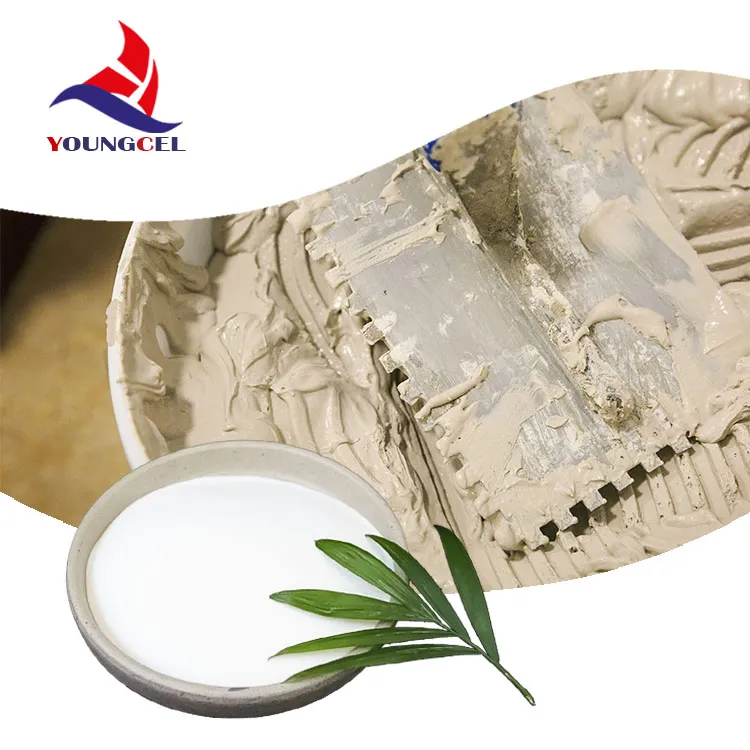Hydroxyethyl Cellulose (HEC) An Overview
Hydroxyethyl cellulose (HEC) is a versatile water-soluble polymer that belongs to the cellulose ether family. It is derived from cellulose, a natural polymer sourced from plant cell walls, and is modified through the addition of hydroxyethyl groups. This modification enhances the solubility of cellulose in water, making it an invaluable ingredient in various applications across multiple industries.
Chemical Structure and Properties
The chemical structure of HEC consists of a backbone of β-(1→4)-D-glucose units derived from cellulose, with hydroxyethyl groups attached to some of the hydroxyl (-OH) groups on the glucose units. This modification results in a polymer that exhibits unique properties such as increased solubility in water, viscosity control, and thickening capabilities. HEC is non-ionic, which means it does not carry a charge, making it compatible with a wide range of substances, including anionic, cationic, and nonionic systems.
Applications
HEC has found applications in various industries due to its remarkable properties. Here are some notable uses
1. Construction In the construction industry, HEC is commonly used as a thickener and rheology modifier in mortars, cement, and sealants. It improves workability, enhances water retention, and prevents sagging during application, which is crucial for achieving a smooth finish.
2. Personal Care Products HEC is a popular ingredient in formulations for shampoos, conditioners, and lotions. It serves as a thickener and stabilizer, creating a desirable texture while ensuring that products maintain their viscosity during storage and use.
hydroxyethyl cellulose hec

3. Paints and Coatings In the paints and coatings sector, HEC is utilized to adjust viscosity and improve the flow properties of formulations. Its presence helps to prevent sagging and ensures even application, enhancing the final appearance of the coating.
4. Pharmaceuticals HEC also plays a significant role in the pharmaceutical industry. It is used as a binder and stabilizer in tablet formulations, as well as a thickening agent in gels and lotions. Its biocompatibility and non-toxic nature make it an ideal choice for various drug delivery systems.
5. Food Industry In food applications, HEC is used as a thickening agent and stabilizer in sauces, dressings, and dairy products. It helps to improve texture and consistency, while also contributing to the preservation of these products.
Environmental and Health Considerations
One of the advantages of HEC is its biodegradable nature, making it a more environmentally friendly option compared to many synthetic polymers. Additionally, it is generally recognized as safe (GRAS) for use in food and pharmaceutical applications, posing minimal health risks when used appropriately. However, as with any chemical, it is essential to follow recommended guidelines for safe handling and usage.
Conclusion
Hydroxyethyl cellulose is a multifunctional compound that has revolutionized numerous industries with its unique properties and versatility. Its ability to act as a thickener, stabilizer, and rheology modifier makes it an essential ingredient in products ranging from personal care items to construction materials. As industries continue to seek sustainable and effective raw materials, HEC stands out as a valuable asset, further enhancing its potential for future applications. With ongoing research and development, the possibilities for hydroxyethyl cellulose seem limitless, promising innovative solutions and products across various fields.
-
A Comprehensive Guide to Methyl Ethyl Hydroxyethyl Cellulose: Applications and Industry InsightsNewsNov.24,2025
-
Understanding Methyl 2 Hydroxyethyl Cellulose: Uses, Benefits & Industry InsightsNewsNov.24,2025
-
Hydroxyethyl Methyl Cellulose HEMC: Industrial Uses, Benefits & Future TrendsNewsNov.23,2025
-
HEMC Cellulose: Versatile & Sustainable Industrial Polymer | YoungcelNewsNov.23,2025
-
Methyl Hydroxyethyl Cellulose: Versatile Building Block for Industry & SustainabilityNewsNov.23,2025
-
CAS 9032 42 2: Understanding Polyvinyl Alcohol's Impact on Industry & SustainabilityNewsNov.22,2025




